With its long history of medicinal use, I find yarrow to be one of the most incredible and fascinating common garden plants.
An herbaceous perennial and member of the aster family, it is distinguished by its feathery leaves and flowers that bloom in densely arranged clusters.
The plant grows to a few feet tall at maturity, spreading by rhizomes to create lovely flowering patches in gardens or fields. And it also smells fabulous!
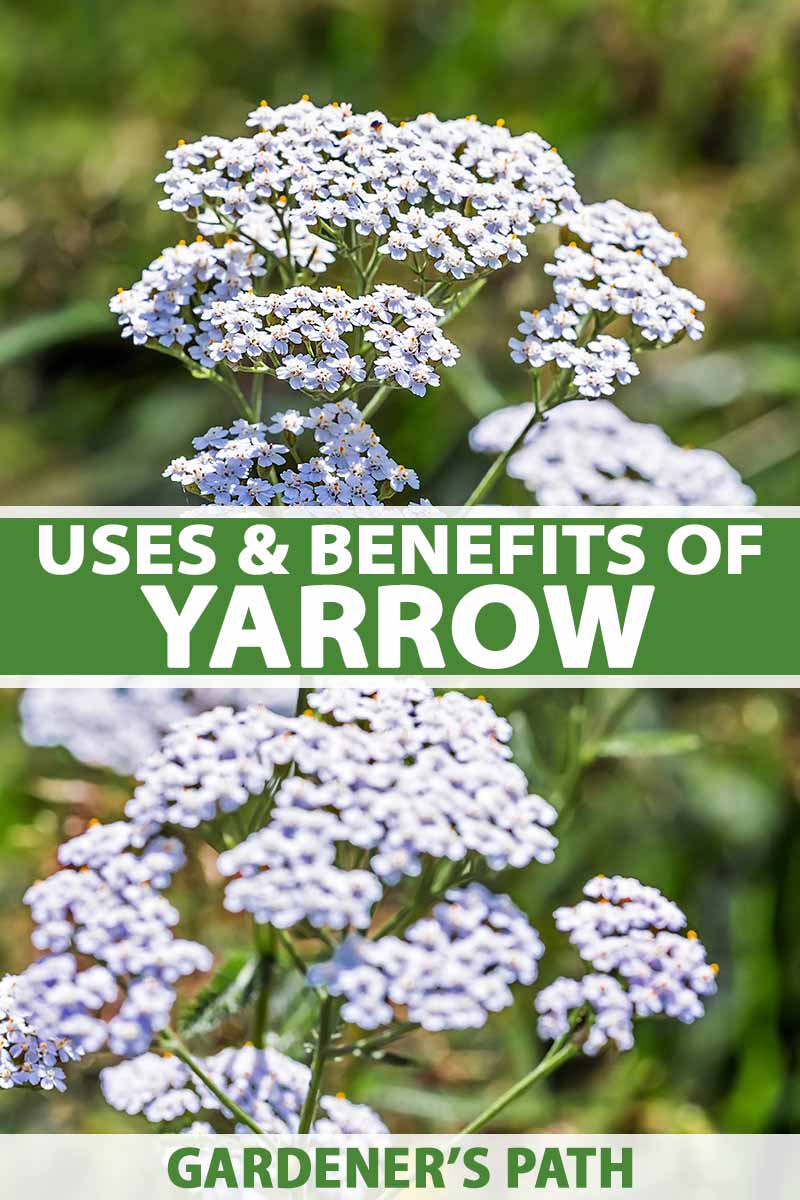
We link to vendors to help you find relevant products. If you buy from one of our links, we may earn a commission.
There are multiple species in the Achillea genus, some wild natives, and several stunning ornamental cultivars featuring a wide range of colors including pale pink, purple, red, white, and yellow.
Boasting a long list of cultural, medicinal, and garden uses, this versatile herb is truly an incredible plant.
Here’s what to come in this article:
What You’ll Learn
Cultivation and History: A Rich and Magical Past
Yarrow has been intertwined with humans for a very long time.
Native to temperate regions of the northern hemisphere in North America, Europe, and Asia, this magical herb has been used medicinally for thousands of years in many cultures around the world.
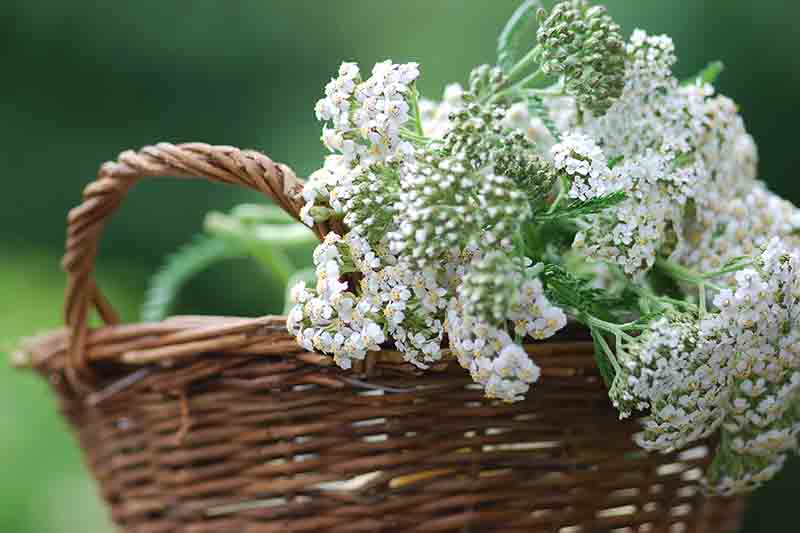
The Latin name Achillea comes from the mythical Greek warrior Achilles, who was said to have used this plant to heal soldiers wounded in war.
It was referred to in the classical period as herba militaris, because of its use in wound healing on the battlefield.
Use may date back even further. Evidence of yarrow has even been found in some Neanderthal grave sites. A study in 2012 by Karen Hardy, et al. found that yarrow was present in the dentition of Neanderthal remains from El Sidrón cave, an archaeological dig site in Spain.
In the Middle Ages it was used as an ingredient in gruit, an herbal mixture used to flavor ale prior to the use of hops. The flowers and leaves are still used in some types of bitters and liqueurs.
In China, stalks of yarrow plants were traditionally used to cast I Ching hexagrams. The I Ching is an ancient Chinese book of divination.
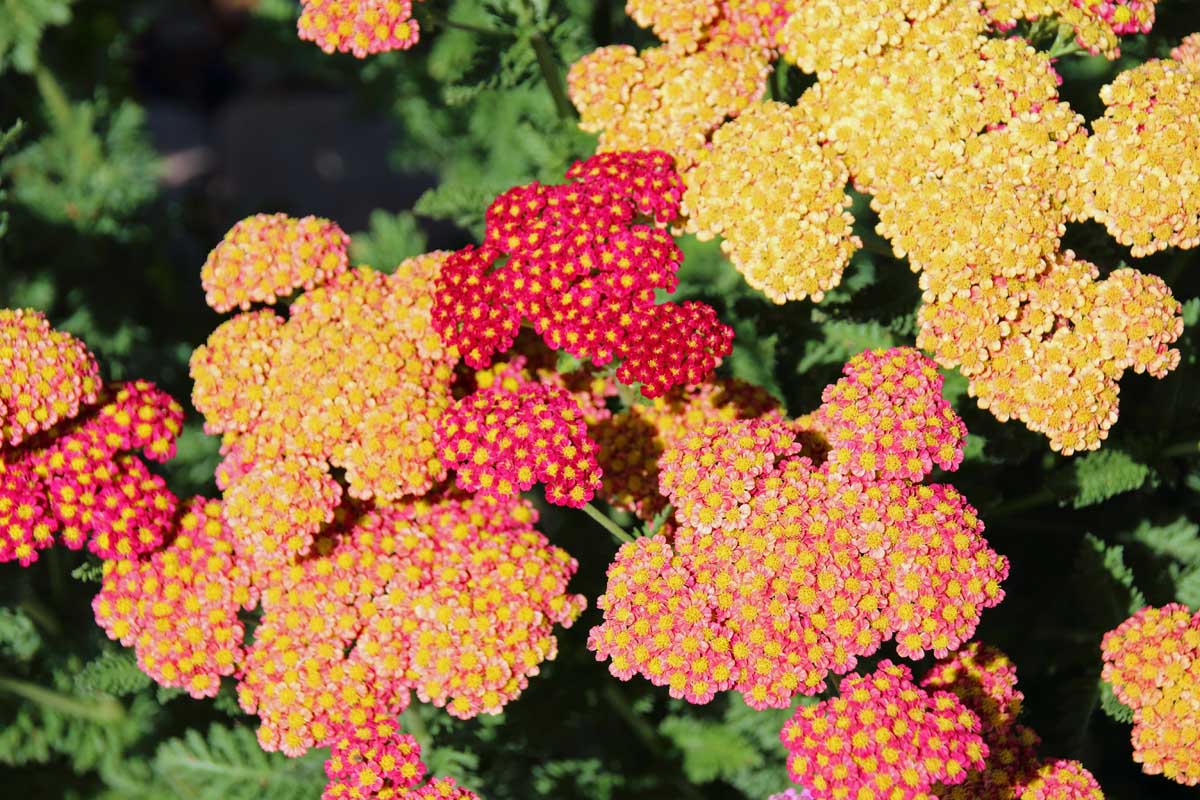
In North America, yarrow is considered to be one of the sacred “Life Medicines” by the Navajo people. It has been used traditionally by many different Native American tribes throughout history.
Easy to grow from seed, yarrow thrives in full sun and well-drained soil, but it will tolerate a variety of soil conditions.
You can direct sow seeds into the garden in early spring, or transplant from starts or cuttings after the danger of frost has passed.
Learn more about growing and caring for yarrow in our full growing guide.
Medicinal Use and Potential Health Benefits
With such a rich history and incredible breadth of medicinal properties, common yarrow, or A. millefolium, is still one of the most widely used medicinal herbs today.
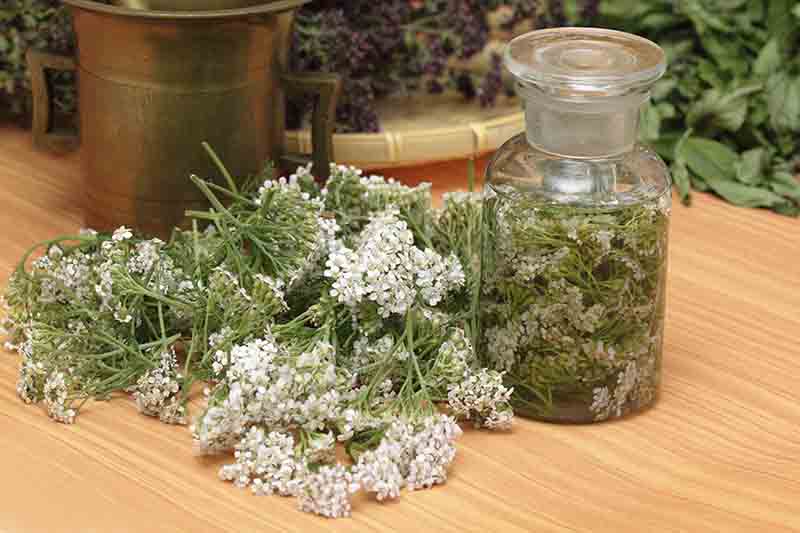
The list of its medicinal properties is extensive, and the benefits of this ancient healing herb have been supported by a number of studies.
One study, conducted by researchers from the Department of Pharmacology and Toxicology at the University of Vienna, demonstrated that its antispasmodic effects may help to soothe symptoms of irritable bowel syndrome.
Long considered by herbalists to be a “blood moving herb,” yarrow has been used to stimulate blood circulation and lower blood pressure.
In herbal medicine terminology, it is known as “amphoteric,” which means it can work in seemingly contradictory ways to help the body achieve homeostasis, or “normalize.”

Due to its styptic and antimicrobial properties, it is famously known for its ability to stop bleeding (when applied directly to a wound), prevent infection, and aid blood circulation when taken internally.
It is often used as a poultice, wash, soak, or salve to relieve pain, and help to heal wounds and injuries of various types.
It can be beneficial in alleviating digestive complaints and symptoms of colds and flu, and is also used to treat hemorrhoids, ease menstrual discomfort and postpartum bleeding, and reduce inflammation in the gums.
The next time you have a toothache, try chewing on a yarrow leaf. Its analgesic properties can help to numb the affected area.
Making Herbal Remedies at Home
Harvest flower clusters when plants are in full bloom, cutting the top third of the plant just above a leaf node.
Leaves and flowers can be steeped in boiling water to make tea, and are best used fresh when applied as poultices for treating minor wounds.
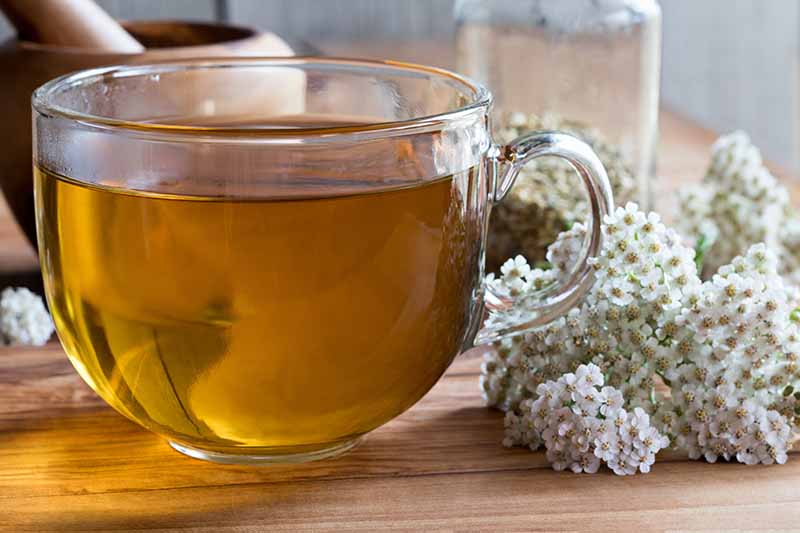
You can dry foliage and flowers using a dehydrator, spread or hang them to air dry, or place them in the oven on the “warm” setting. Once they are thoroughly dried, it is easy to strip the leaves and flowers off the stems.
We have more tips on drying herbs here.
Both the dried leaves and the flowers can be consumed internally as a tea, preserved in tinctures, or infused into oils to make salves and creams.
Yarrow tea has a sweet and mildly bitter, aromatic flavor. It makes a wonderful addition to the herbal medicine cabinet to alleviate mild symptoms of colds and flu, as well as minor digestive complaints.
Infused Oil
Making an infused oil with yarrow is easy, and this serves as a useful treatment for wounds, inflamed muscles, and bruises. Its anti-inflammatory and astringent properties may help to reduce varicose vein swelling in some cases.
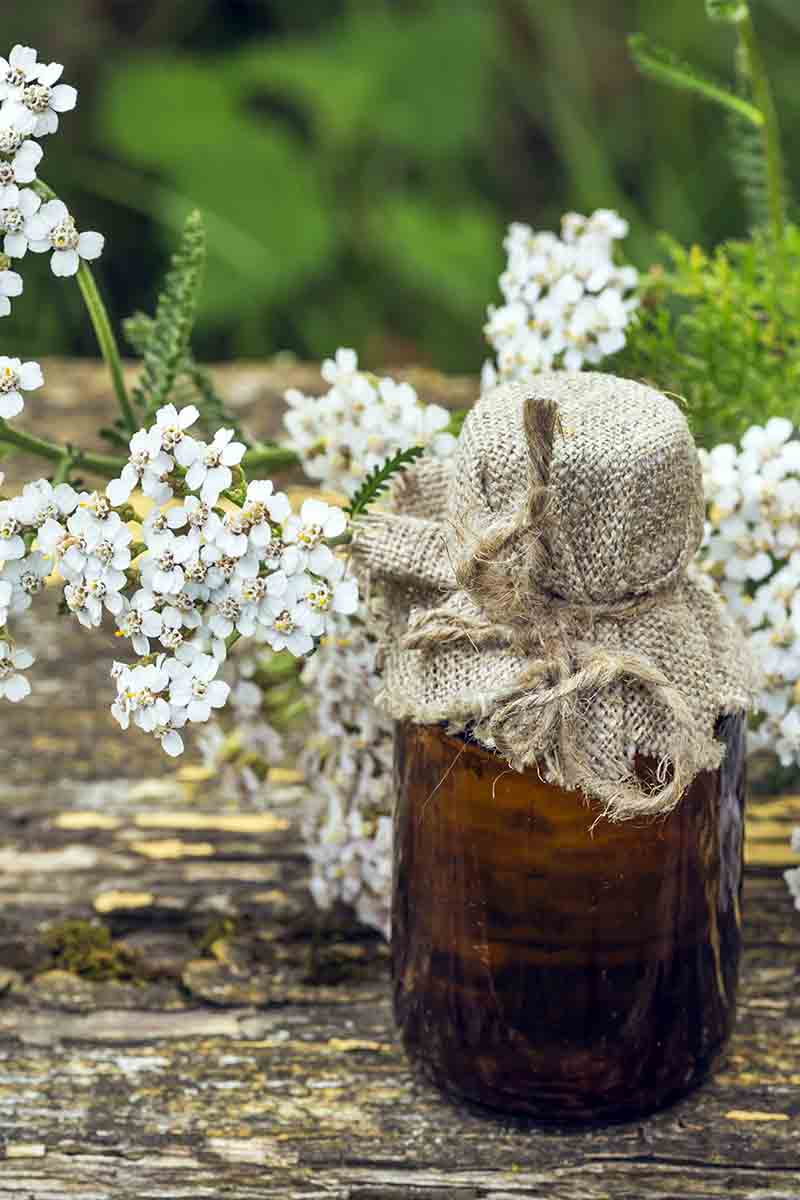
Just grind up some dried leaves and flowers, place them in a glass jar, and cover with a carrier oil in a 1:4 ratio, with one part dried plant matter and four parts oil.
I recommend using cold-pressed extra virgin olive oil as it is affordable and easy to find, but you can use any kind of high-quality neutral carrier oil that you prefer.
Seal the jar tightly with a lid and set it in a dark place for a few weeks, shaking daily to agitate the mixture.
You can also choose to leave the jar in the sun to heat infuse for the first few days. Be sure to move it to a cool, dark location for the remainder of the infusing time.
After 4-6 weeks, strain the oil and use it as is, or try melting in some beeswax and essential oils to make an herbal salve. This can be stored in tins or jars in a cool, dark place.
Tincture
You can also make a tincture from the dried leaves and flowers. As described above, grind them up, place them in a glass jar, and cover with 80 proof (or higher) alcohol.
Leave it to infuse for 6-8 weeks in a cool, dark place.
Strain, and place in a labeled dropper bottle. The tincture can be used as a mosquito repellent when applied to the skin, but always make sure you test it on a small area first, especially if you have sensitive skin.
A Note of Caution:
This plant is generally recognized as safe for use, though in rare cases yarrow may cause an allergic reaction. It should not be used if you are sensitive to plants in the aster (Asteraceae) family. It should also be used with caution during pregnancy or if you are taking any prescription medication. Always remember to consult your doctor or healthcare practitioner before using any herbal remedy.
According to the ASPCA, yarrow is toxic to dogs, cats, and horses.
Garden Use
It only makes sense that a plant with so many therapeutic medicinal uses would be restorative for the garden as well. And yarrow is an amazing plant to incorporate in gardens for a variety of reasons.
This plant has extensive roots that draw nutrients from deep within the soil.
It can bring potassium, calcium, magnesium, phosphorus, and copper to the surface, improving the soil quality for other plants when used as a mulch material or added to the compost pile.
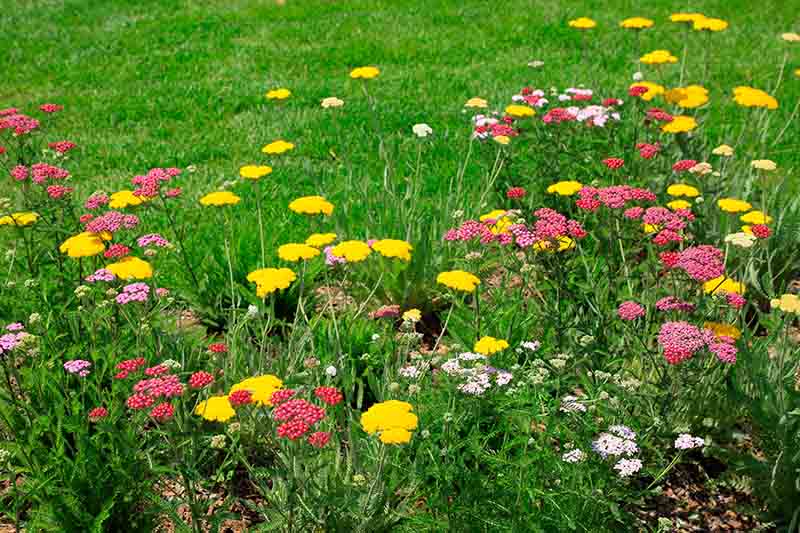
Some gardeners also use yarrow instead of comfrey to make a tea fertilizer to apply as a soil conditioner.
Because it is drought tolerant and can grow in poor, dry soils, it is also useful for combating erosion. It is sometimes even used as a drought tolerant lawn replacement in xeriscaping.
And that’s not all!
The beautiful flowers attract beneficial insects such as predatory wasps, which eat common garden pests and pollinate other plants.
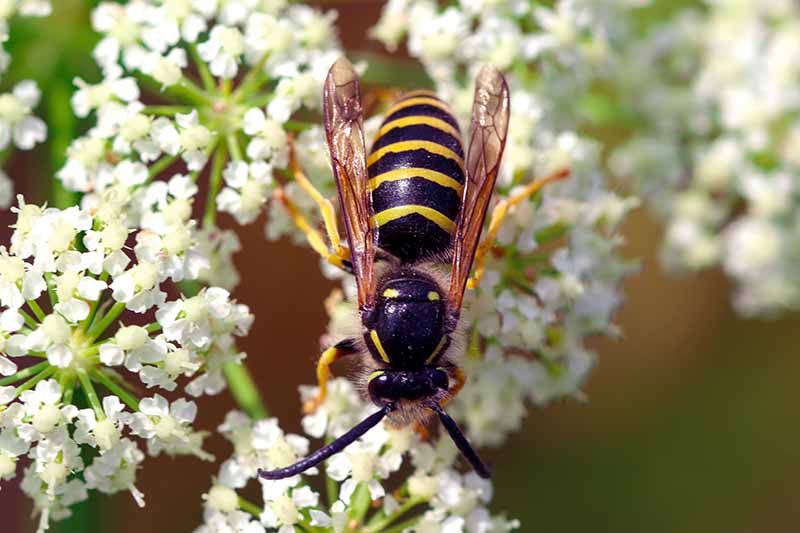
For these reasons, it is often included in butterfly and wildlife gardens, and native plant displays.
Ornamental Use
Thanks to its beauty and general popularity, yarrow has been bred to create several breathtaking cultivars for ornamental use.

It adds interest to perennial borders, and the flowers make a delightful addition to cut flower arrangements.
There are a number of lovely varieties available to add color and charm to your garden.
You can find packages of 1,000 A. millefolium seeds in a mix of colors including coral, gold, ivory, lilac, pink, rose, and yellow available at True Leaf Market.
Or, to enjoy bright red flowers with delicate yellow centers, A. millefolium var. rubra seeds are available in a variety of packet sizes from Eden Brothers.
A. millefolium – Common Yarrow
And don’t forget to plant some of the traditional white-flowered variety.
It is beautiful, resilient, and medicinal. Seeds are available at True Leaf Market in 1- or 4-ounce packets.
Read about more of our favorite varieties of yarrow and where to find them here.
More Than Meets the Eye
Whether you are growing it for its medicinal value, benefits to your garden, beautiful flowers, or a combination of all these, yarrow is truly a miraculous plant that you don’t want to miss out on!
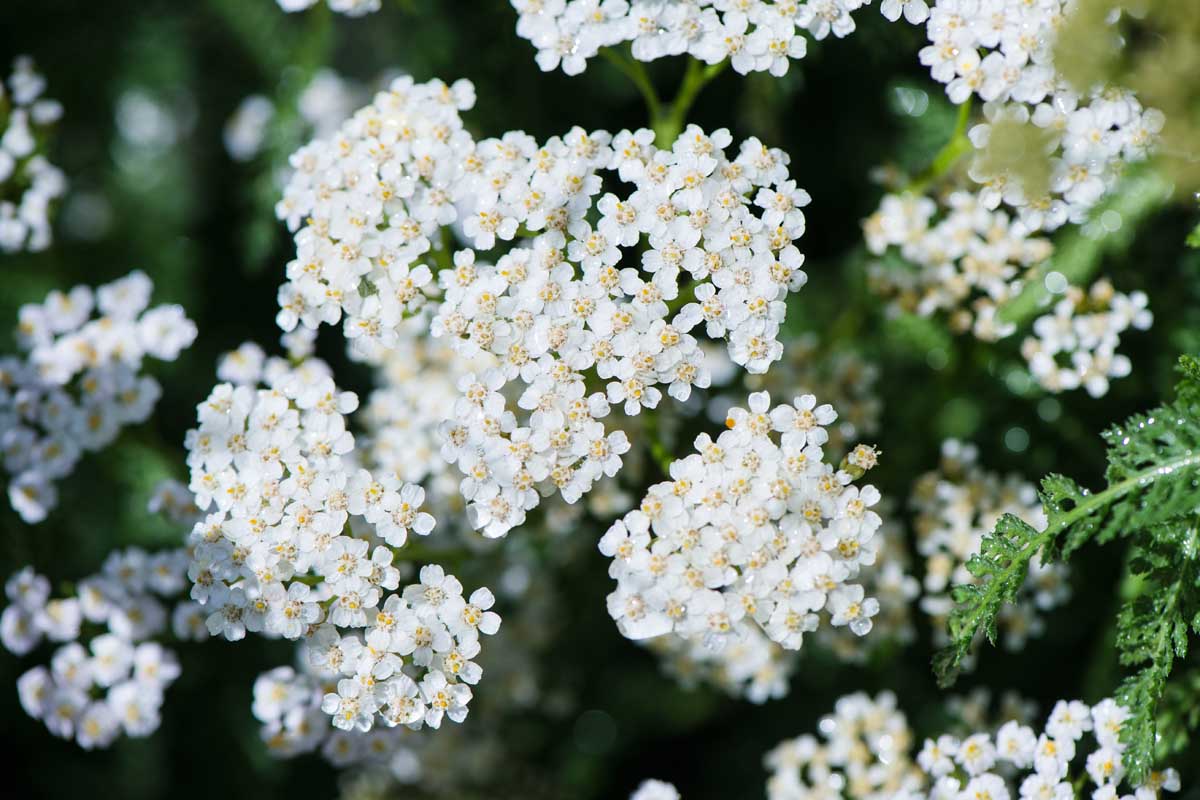
What are your favorite uses for yarrow? Let us know in the comments below!
And to learn more about growing medicinal plants in your garden, you’ll need these guides next:
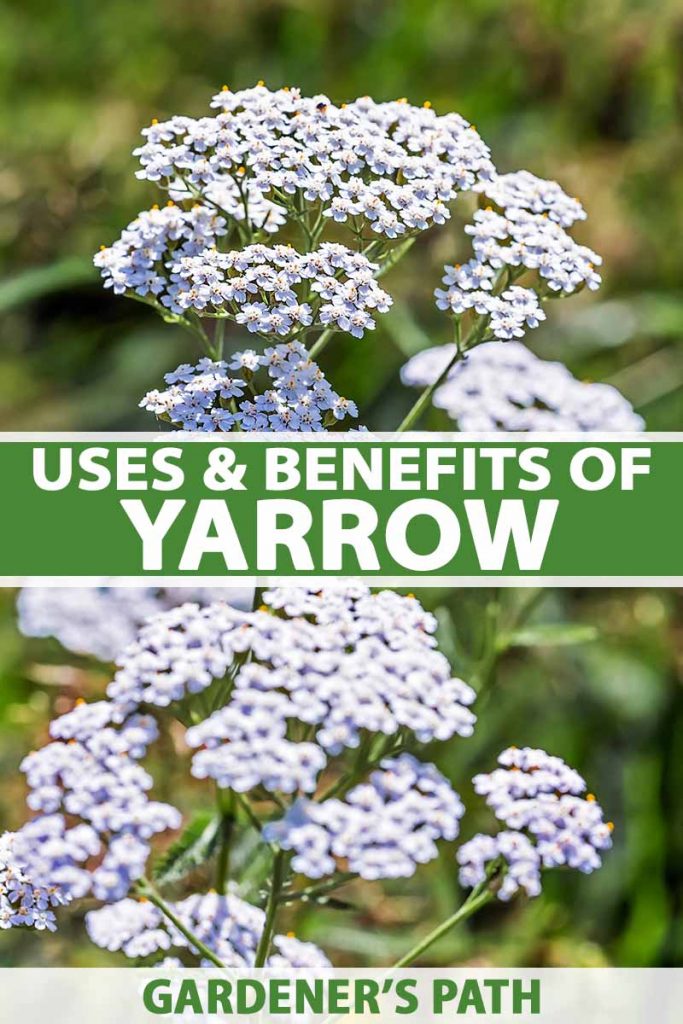
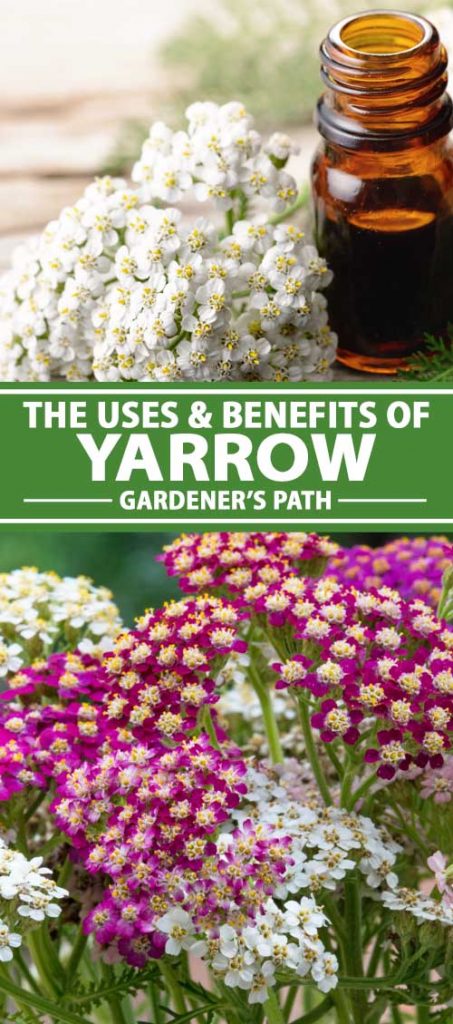


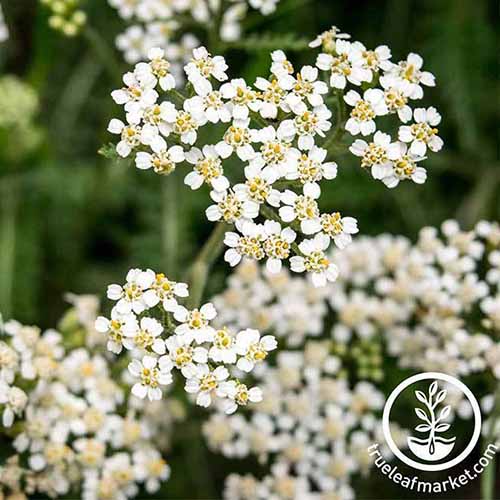


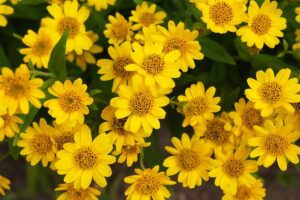
I just love yarrow. I make a tincture from it and use if at the first sign of a cold. I use it for sore throats and on bruises.
I just saw it growing so I was like huh, wonder this can be used for? I search it up and practically can be used for anything, lol!
Can the white and coloured yarrow be used interchangeably?
Yes, all colors can be used interchangeably! It is worth nothing that wild yarrow, usually found in white and shades of light yellow, will likely have stronger medicinal properties. But the ornamental varieties can certainly be used too. As long as the species is Achillea millefolium you are good to go!
I am so greatful to have stumbled across your article. I bought a yarrow plant excited to see it said Achillea millefolium on the pot, when the red flowers started to bloom I was so sad that I might have gotten something that, although beautiful, I wouldn’t be able to use medicinally. Thank you for clarifying this.
Thank you for the kind words Danielle!
My Mom was 10 years old when she contracted polio. She was in the hospital and overheard the doctors telling her mom (my grandma) that she would never walk again. Grandma took Mom home and had the rest of the children gather yarrow. She bathed mom in yarrow (how often or how hot the water was, I have no idea). Mom walked again. I wish Grandma had passed on her knowledge to her children!! I picked a bouquet of white yarrow, growing wild, every spring for Mom until her passing.
Wow, what a beautiful story! Thanks for sharing!
I have used yarrow most commonly to stop bleeding from wounds. I have also prepared it for a friend who lost their voice to a cold and after drinking it their voice returned. It is also good for a sore throat or to relieve a cough. After I moved I gave all my herbal books as well as most of my herbs away. Not soon after this, I was in need of this information to confirm my understanding before I used this herb again. Thank you for publicizing such valuable information
I think you can also use the root to numb your mouth.
I have Yarrow growing all around my small Hazelnut trees. Is going to harm the trees by competing with them?
Yarrow attracts pollinators and beneficial insects, it naturalizes readily via a strong network of underground rhizomes that will help to keep weeds out, and many permaculture gardeners recommend it as a good option to plant under fruit trees in a food forest. I think you will find the benefits outweigh the potential risks here! I would just caution against doing any digging or dividing of plants in the root zone of your trees, since you don’t want to disturb them.
Hi. Great info. Thanks for sharing. Is it only the white Yarrow that is medicinal?
Oh. I should have read other comments. My question is answered. Thanks!
Thanks for reading, Jill!